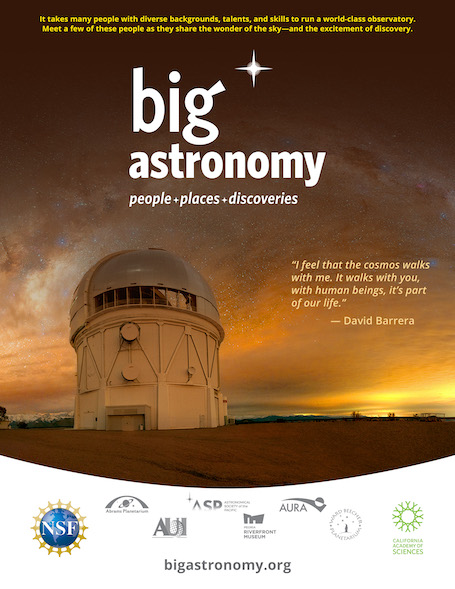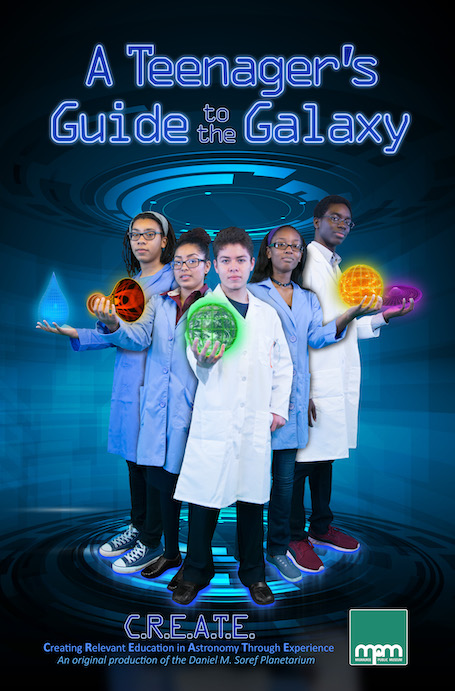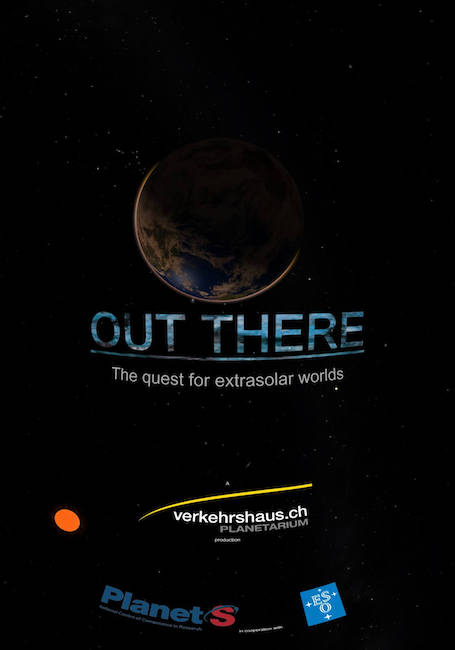Public Programs
Public programs are offered on Friday evenings throughout the year at 7:30 pm (May through September at 8:30 pm) and Saturday afternoons during the academic year at 1:00 pm. Admission to all public programs is $8 for adults and $6 for children, seniors and UToledo community members (children 3 and under are free).
We accept credit card and cash payments. All shows are first-come, first-served - reservations and advanced ticket purchases are not available. Doors open 30 minutes before the show, during which time you can explore the displays in our lobby. (Note the time change to 8:30 PM as of May 1.)
The planetarium (show) portion of the program is approximately one-hour, while the
observing session on Friday night will continue until everyone has had a chance to
take a look through the telescope. More information below.
Winter 2026 Schedule

Capcom Go!
Friday evenings at 7:30 PM from January 9 to January 30, 2026
An immersive, historical documentary that showcases the achievements of the Apollo program and what it took to put the first human on the Moon. It introduces a new generation to the immense challenges they overcame and will inspire them to become the explorers, designers, engineers, thinkers and dreamers of the future.

One World, One Sky
Saturday afternoons at 1:00 PM from January 10 to January 31, 2026
One World, One Sky, Big Bird’s Adventure is a full-dome show that follows Sesame Street's Big Bird and Elmo as they explore the night sky with Hu Hu Zhu, a Muppet from China. Together they take an imaginary trip from Sesame Street to the Moon, where they discover how different it is from Earth. One World, One Sky, Big Bird’s Adventure aims to nurture a child's natural sense of wonder about the night sky while connecting kids across nations through a common bond in learning about the sky.

Big Astronomy
Friday evenings at 7:30 PM from February 6 to February 27, 2026
Journey to three world-class observatories in Chile’s rugged Andes Mountains and arid Atacama Desert— remote, extreme regions that happen to have the perfect conditions for astronomical research. Along the way, you’ll meet an inspiring set of astronomers, engineers, technicians, and support staff who keep these large observatories running.

Teenager's Guide to the Galaxy
Saturday afternoons at 1:00 PM from February 7 to February 28, 2026
Created and hosted by cosmically curious teenagers from urban Milwaukee schools, this unique cosmic experience will take you on a dynamic journey across the Universe and through time. Explore the origins and fate of the Universe, black holes and our Sun. Witness stunning full dome animations video scripted, story boarded, and narrated by these inspiring young adults.

Out There
Friday evenings at 7:30 PM from March 6 to March 27, 2026
In the last twenty-five years astronomers have discovered thousands of new planets orbiting other stars in our Milky Way. Learn the techniques they use to find these hidden worlds from both space-based and earth-based observatories. Find out the diverse mix of planets, “Out There”.

Magic Globe
Saturday afternoons at 1:00 PM from March 7 to March 28, 2026
On vacation at her grandpa’s, a little girl named Mia accidentally discovers a mysterious piece of astronomical machinery. Edmund, Mia’s eccentric uncle, tricks the girl into using the tool’s secret powers to change the world’s seasons. She realizes the consequences of what they are going to do, but Edmund doesn’t want to let the plan go. “Magic Globe” is an engaging story designed to interest and challenge children from 5 to 12 years old.
What you can expect:
-
A live guided tour of the Toledo night sky
You will learn about the constellations visible from Toledo and any planets visible to the naked eye. We also typically discuss one "hot topic" in astronomy, such as the discovery of new planets around other stars, or the latest NASA discover on Mars.
-
The full-dome presentation
Whether we are traveling inside a black hole, taking a tour of the moon with Elmo, or learning about the skies over Toledo, you and your family will simply be amazed at the full-dome immersive show. -
An open-ended question and answer session
Our expert host will answer all of your astronomy questions, whether they pertain to the live tour of the night sky, the feature presentation, or any other astronomy question that you might have. -
Observing at Brooks/Ritter Observatory
You will be escorted over to Brooks Observatory atop McMaster Hall to view the stars and/or planets through our new 14 telescope. On the first Friday of every month, we instead observe with the Ritter 1m (40 in) telescope. This telescope is the largest active telescope east of the Mississippi and is still used by the astronomers at UToledo for their research. All observing is weather permitting!


